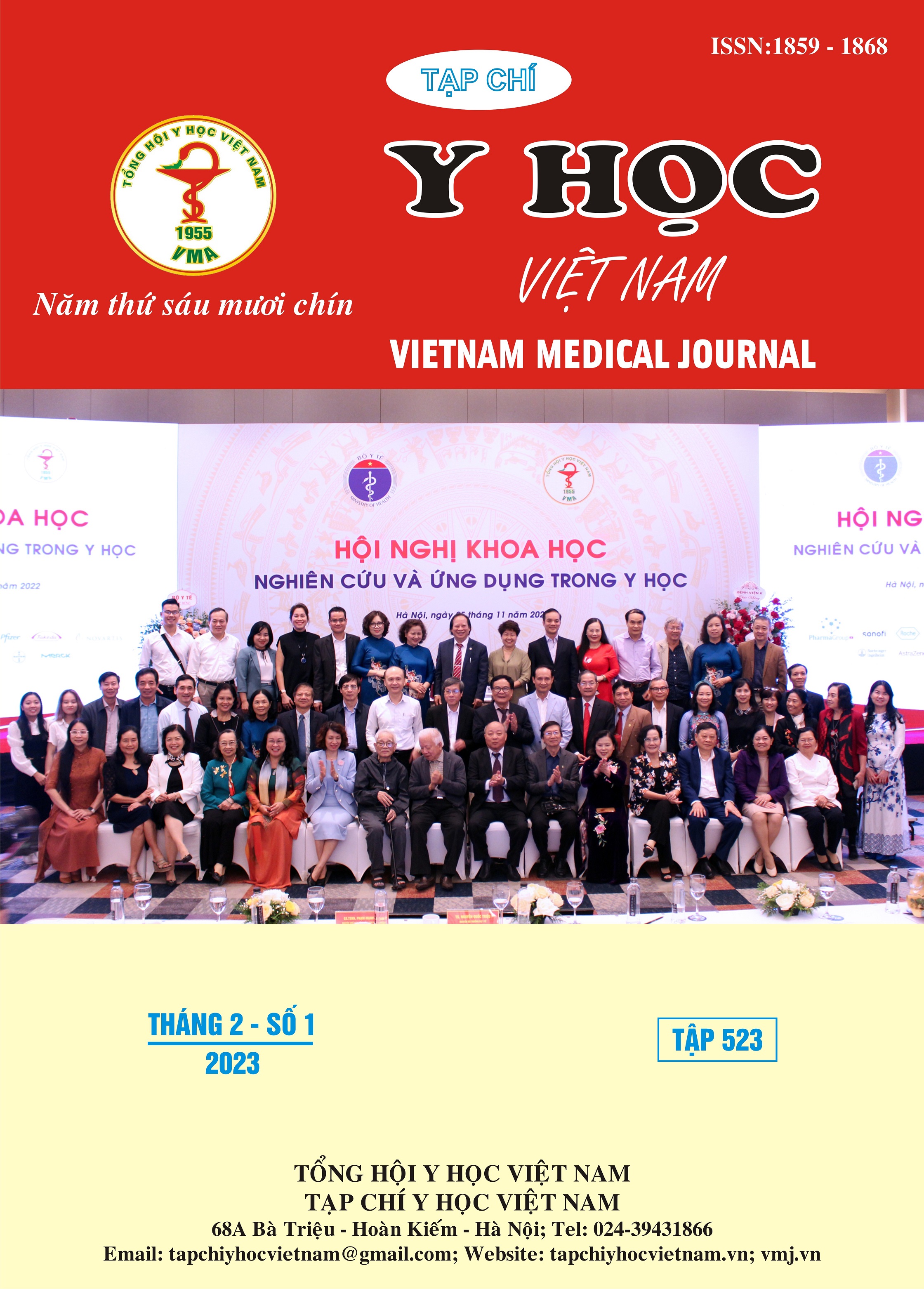STUDY OF CLINICAL FEATURES AND MAGNETIC RESONANCE IMAGING OF VESTIBULAR SCHWANOMA MICROSURGICAL
Main Article Content
Abstract
Objectives: To investigate some features of clinical and magnetic resonance imaging of vestibular schwanoma. Subjects and methods: A prospective, descriptive, cross-sectional study on 74 patients with unilateral vestibular schwannoma who were microsurgical treated in Viet-Duc hospital from October 2016 to March 2018. Results: Female (58,11%) was predominant than male (41.89%). The age mean was 50.41% ± 9.43 (year). The most symptoms were tinnitus, hearing loss, headache, and ataxia (83.7%; 82.43%; 68.91% and 37.83%, respectively). There was no significant difference between the tumor’s location on the right and left side (54.41 versus 45.59%). 81.08% of tumors were heterogenesis and tumor compressing the cerebellum (95.94%), widening the inner ear canal (86.48%). The average tumor size was 38.1± 7.1 mm. Conclusion: The most symptoms were tinnitus, hearing loss, headache, and ataxia (83.7%; 82.43%; 68.91% and 37.83%, respectively). The tumor’s location: on the right side (54.41%) and left side (45.59%). 81,08% of tumors were heterogenesis and tumor compressing the cerebellum (95.94%), widening the inner ear canal (86.48%).
Article Details
Keywords
vestibular schwannoma, microsurgery.
References
2. Thapa P.B et al (2016), “Vestibular Schwannoma: An Experience in a Developing World”, World J Oncol, 10 (2): p. 118-122.
3. Akinduro O.O et al (2019), “Outcomes of large vestibular schwannomas following subtotal resection: early post-operative volume regression and facial nerve function”. J Neurooncol.
4. Lees K.A et al (2018), “Natural History of Sporadic Vestibular Schwannoma: A Volumetric Study of Tumor Growth”, Otolaryngol Head Neck Surg, 159 (3): p. 535-542.
5. Berkowitz O et al (2017), “Gamma Knife Radiosurgery for Vestibular Schwannomas and Quality of Life Evaluation”, Stereotact Funct Neurosurg, 95 (3): p. 166-173.
6. Stangerup S.E et al (2006), “The natural history of vestibular schwannoma”, Otol Neurotol, 27 (4): p. 547-52.
7. Awan M.S et al (2001), “Vestibular schwannomas: clinical presentation, management and outcome”, J Pak Med Assoc, 51 (2): p. 63-7.


